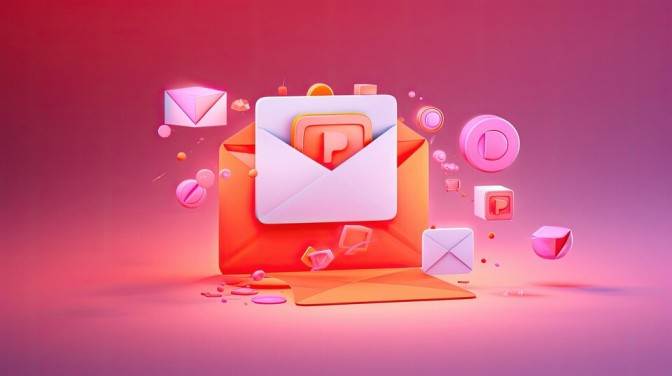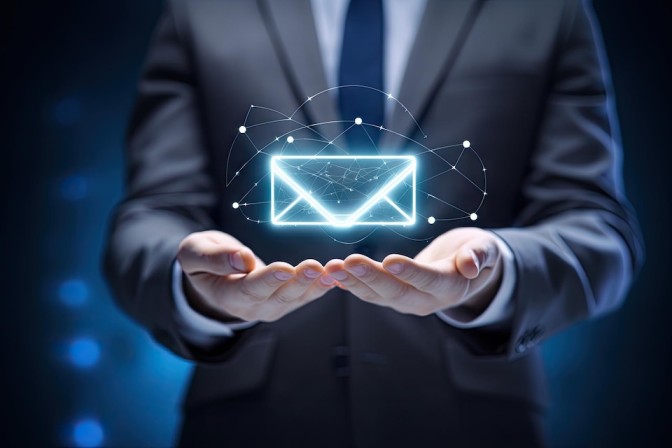Introduction :
In today’s digital age, where new marketing channels emerge every day, one strategy has consistently proven its worth and stood the test of time: email marketing. It’s a robust and versatile approach that continues to be a cornerstone of successful business outreach.
In this comprehensive guide, we’ll start by unravelling the essence of email marketing, understand why it’s indispensable for businesses, and explore the key components that make it a potent tool for connecting with customers.
Email marketing is a strategy for digital marketing that encompasses the distribution of focused emails to a specific set of recipients, often referred to as subscribers or recipients, intending to achieve specific business goals. These goals can vary widely, encompassing a range of purposes, including:
- Promoting Products and Services : One of the primary uses of email marketing is To advertise and promote products or services to both potential and current customers. Businesses can send emails showcasing new products, special offers, or updates on existing offerings.
- Building and Nurturing Customer Relationships : Email marketing offers a unique opportunity to establish and nurture customer relationships. Regular, well-crafted emails can foster trust and loyalty, transforming one-time buyers into repeat customers.
- Providing Valuable Content : Many companies use email marketing to deliver valuable content to their audience. This content may include newsletters, blog posts, industry insights, educational resources, and more aimed at providing value beyond just sales pitches.
- Driving Website Traffic : Email campaigns can direct recipients to specific web pages, blog articles, or other online content. This can be a valuable tactic for increasing website traffic, improving SEO, and generating leads.
- Announcing Updates and Events : Email marketing is an effective way to communicate important updates, announcements, or upcoming events, such as product launches, webinars, and promotions.

Now that we understand what email marketing entails let’s delve into why it’s a vital tool for businesses:
- Direct Access to Your Audience : Unlike other marketing channels where algorithms and gatekeepers can limit your reach, email marketing provides direct access to your audience’s inboxes. When an individual subscribes to your email list, they. Permit you to communicate with them, ensuring your message reaches them directly.
- High ROI (Return on Investment) : Email marketing consistently delivers one of the highest ROIs in the marketing world. It’s a cost-effective way to reach a large audience and generate revenue. According to the Data & Marketing Association (DMA), For each dollar invested in email marketing, the average ROI is $42.
- Personalization and Segmentation : Email marketing allows for a high degree of personalization. You possess the capability to segment your email list according to various criteria, such as demographics, past behavior, or preferences. This enables you to send tailored, relevant content to different groups, increasing engagement and conversion rates.
- Automation : Email marketing platforms offer automation features that save time and improve efficiency. You can set up automated email sequences, such as welcome emails, drip campaigns, and abandoned cart reminders, to engage with subscribers at key touchpoints in their customer journey.
- Data and Analytics : Email marketing provides valuable insights into your campaign’s performance. You have the capacity to Monitor metrics such as open rates, click-through rates, unsubscribe rates, and conversion rates is essential for assessing the effectiveness of your email campaign. This data helps you refine your strategies, optimize your content, and make data-driven decisions.

Key Components of Email Marketing
To execute a successful email marketing campaign, it’s crucial to understand the key components and elements that make up this multifaceted approach:
- Email List Building : Your email marketing journey begins with building a high-quality email list. You can collect email addresses through various means, including elements like sign-up forms on your website, social media contests, or in-person events. Ensure you obtain explicit consent to send emails and comply with relevant data protection regulations.
- Segmentation : Not all subscribers are the same. Divide your email list into segments using criteria such as demographics, location, purchase history, and engagement level. This enables you to dispatch more focused and pertinent content to different segments of your audience.
- Content Creation : The content of your emails is the heart of your email marketing efforts. Generate captivating, educational, and valuable content that connects with your audience. Common types of email content include newsletters, product announcements, educational content, and promotional offers.
- Design and Layout : Emails should be visually appealing and responsive, displaying correctly on various devices, including smartphones and tablets. Invest in a clean and professional design that aligns with your brand identity.
- Email Automation : Email marketing platforms offer automation features to streamline your efforts. Set up automated email sequences to welcome new subscribers, nurture leads, and re-engage inactive customers. Automation saves time and ensures consistent communication.
- Testing and Optimization : Implement and Conduct A/B testing to experiment with various components of your email campaigns, such as subject lines, images, and call-to-action buttons. Consistently refine your campaigns based on the outcomes and feedback you receive.
- Compliance : Stay informed about email marketing regulations, such as the CAN-SPAM Act in the United States or GDPR in the European Union. Ensure your email marketing practices comply with these laws and respect subscribers’ preferences, including providing an easy way to unsubscribe.
- Analytics and Reporting : Use the analytics provided by your email marketing platform to monitor campaign performance. Continuously track metrics such as open rates, click-through rates, conversion rates, and the revenue generated to evaluate the performance of your email campaigns. Analyze the data to refine your strategies and improve results.
- Personalization : Enhance email personalization by addressing recipients by their names and customizing content to align with their preferences and behaviors. Personalization amplifies engagement and fosters a more profound connection with your audience.
- Consistency and Frequency : Establish a consistent email-sending schedule to keep your audience engaged without overwhelming them. The frequency of your emails should align with the expectations you’ve set with your subscribers.
conclusion
In summary, email marketing stands as a potent and adaptable tool that empowers businesses to establish connections with their audience, cultivate leads, and propel conversions. Its direct access to subscribers, high ROI, and potential for personalization make it a must-have in any comprehensive digital marketing strategy. By mastering the key components of email marketing and understanding its importance, businesses can unlock their full potential and forge lasting connections with their customers.
Are you looking to dive into the exciting world of Digital marketing ? Look no further! StartAbove is the perfect platform to kick-start your journey and take your skills to new heights.

